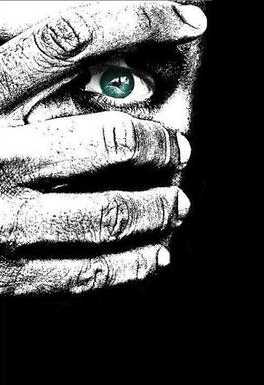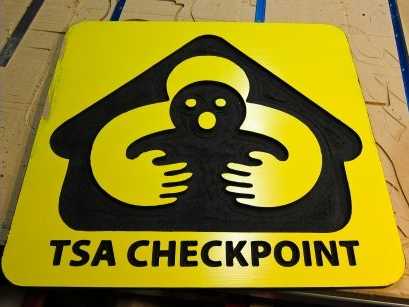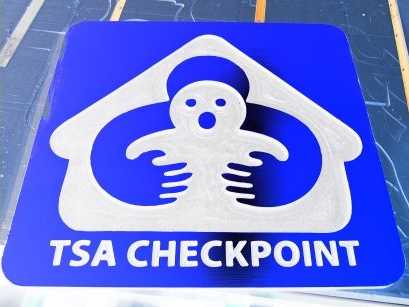The Future of the
PRISON STATE
By Gynnae Byrd | SACRAMENTO, CA
 Last year, construction of the state's
33rd prison was completed. No other new prisons have been authorized,
although the California Corrections Department has concluded that, at the inmate
population's current rate of growth, it will need at least 15 new ones in the
next eight years. There is strong indication, however, that, although they want
criminals locked up, voters are unwilling to put the state deeper into debt to
house them. Since 1990, they have continually rejected ballot measures
authorizing the issuance of general-obligation bonds for prison construction.
Last year, construction of the state's
33rd prison was completed. No other new prisons have been authorized,
although the California Corrections Department has concluded that, at the inmate
population's current rate of growth, it will need at least 15 new ones in the
next eight years. There is strong indication, however, that, although they want
criminals locked up, voters are unwilling to put the state deeper into debt to
house them. Since 1990, they have continually rejected ballot measures
authorizing the issuance of general-obligation bonds for prison construction.
This puts California in a quandary. Based on the Corrections Department's population projections, the nation's largest prison system, with 159,000 inmates, will run out of beds by midyear 2000. There is no plan to describe how the limited prison beds would be allocated or which inmates would become eligible for early release. Do we continue down the same path that has led us to build 21 prisons in the past 15 years at a cost exceeding $4.5 billion, plus $4 billion a year to operate them? (Which does not include the millions of dollars in lawsuits that has to be paid out as the result of abuses against the prisoners by the guards. WFI EDITOR) Or do we look to alternatives, with a view toward reducing recidivism, and thereby ultimately reducing costs?
The recidivism rate in California is an alarmingly high 70%. About two-thirds of the parolees return to prison because of a parole violation; 14% of them commit a new crime. For example, of the 133,000 inmates admitted to prison in fiscal year 1996-97, 49,000 were newly sentenced and 18,000 were parolees incarcerated for a new crime. The remainder were considered "technical" parole violators, who, at any given time, constitute about 17% of the state's prison population. On average, they are serving 12 months or less. The cost: Taxpayers are spending close to half a billion dollars a year ($22,000 per inmate per year) to lock people up for missing appointments with their parole officers, failing urine tests or being in the wrong place at the wrong time.
About 90% of the adult inmates in California are serving determinate sentences. As a result, at least 90% of them will eventually be back on the streets, regardless of the best efforts to keep them behind bars. The challenge for California, in the wake of its bed-space crisis, is how to deal with these people in terms of public safety and fiscal responsibility. Two research reports released this year provide some direction.
In January, the National Center on Addiction and Substance Abuse at Columbia University released a report on substance abuse and the prison population. The report found that drug and alcohol abuse and addiction are implicated in 80% of the crimes committed across the country and that substance abuse is "tightly associated with recidivism." Furthermore, it linked a dramatic increase in the number of women incarcerated to increased sentences for drug use and possession and domestic-violence-related crimes. The report noted that, contrary to conventional wisdom, a legal substance, alcohol, was used more often in the commission of violent crimes than were illegal substances such as crack, cocaine or heroin.
The report's significance lies in its empirical support for the efficacy of substance-abuse treatment. An investment in treatment, the report said, can make a dramatic difference in societal costs related to crime and imprisonment. To quote the report: "The cost of proven treatment for inmates, accompanied by appropriate education, job training and health care, would average about $6,500 per year. For each inmate who successfully completes such treatment and becomes a taxpaying, law-abiding citizen, the annual economic benefit to society - in terms of avoiding incarceration and health-care costs, salary earned, taxes paid and contribution to the economy - is $68,000, a ten-fold return on investment in the first year." Thus, even if substance-abuse programs in prison achieved a 10% success rate, they would pay for themselves in the first year.
A second report, by the Little Hoover Commission and also released last January, arrived at similar conclusions and added some. It noted that 70% of California's parolees are unemployed, 85% are substance abusers, 60% lack basic survival skills, 50% are illiterate and 10% are homeless. Such statistics help explain why the recidivism rate is so high in California. Their implications for juvenile-delinquency and youth-crime rates are also evident, since children of parolees probably live with a single parent in a poor household.
The report recommended that, instead of using expensive prison beds to warehouse substance abusers and technical parole violators, the money would be better spent on providing inmates with job skills, an education and/or substance abuse treatment. In support of this reallocation of resources, it contended that it is actually "tougher on crime" to require an inmate to work or attend a regimented program for eight hours a day than it is to allow him or her to sit around all day watching TV. This recommendation is especially compelling when one considers that, in any given year, approximately 1,400 inmates are released directly into California communities from solitary confinement, where they spend up to 23 hours a day in a cell and move about the prison only if shackled at the waist and ankles. The public-safety implications of releasing this type of prisoner directly into society cannot be underestimated.
The true challenge comes in convincing policymakers, especially politicians who have campaigned on tough-on-crime platforms, that spending public funds on such services for inmates is prudent. Currently, the Corrections Department has a mere 3,000 treatment beds for 159,000 inmates. The tough question is: Do we feel any safer today after spending billions of dollars to lock people up, only to have them be subsequently released? What will happen when we run out of prison beds in 18 months?







